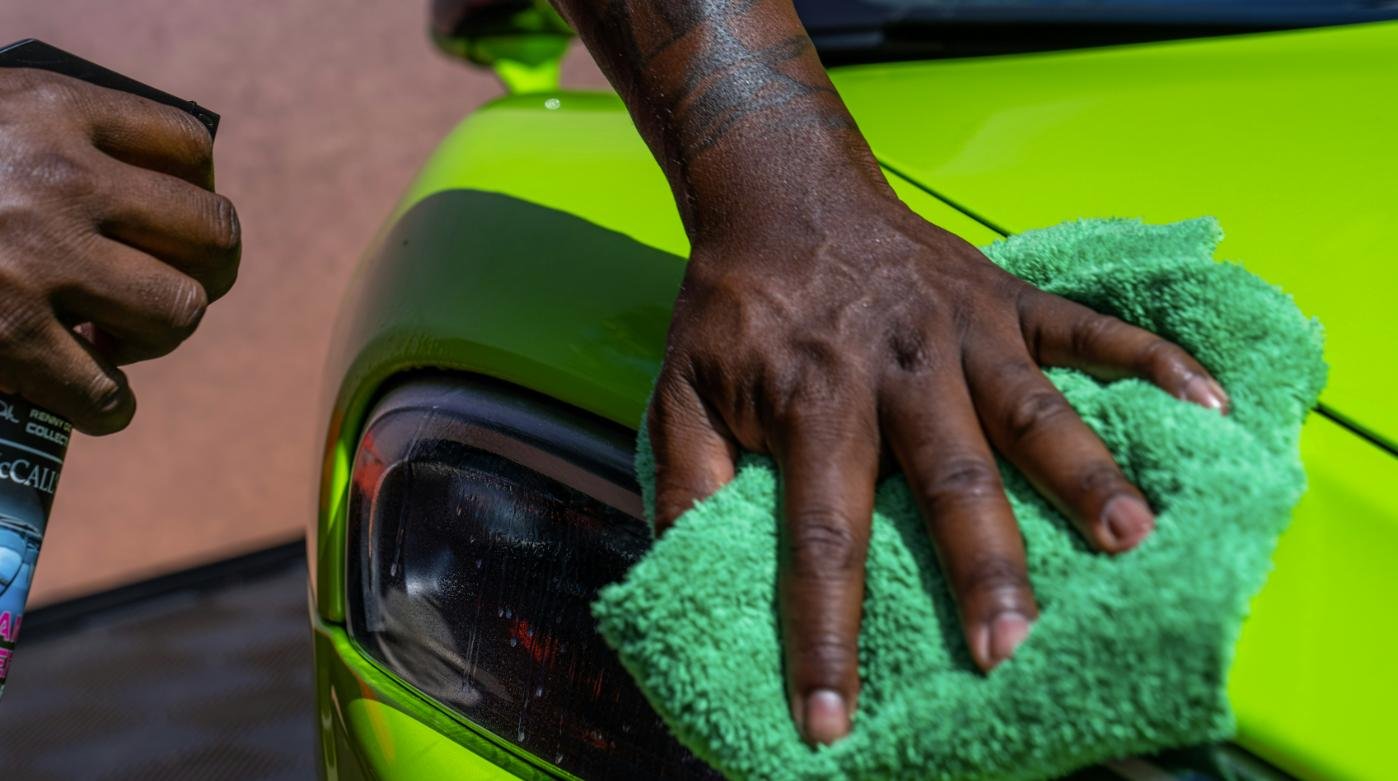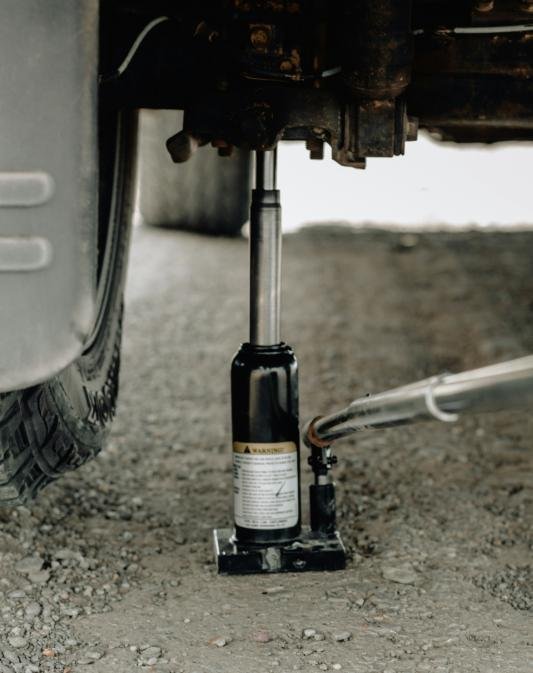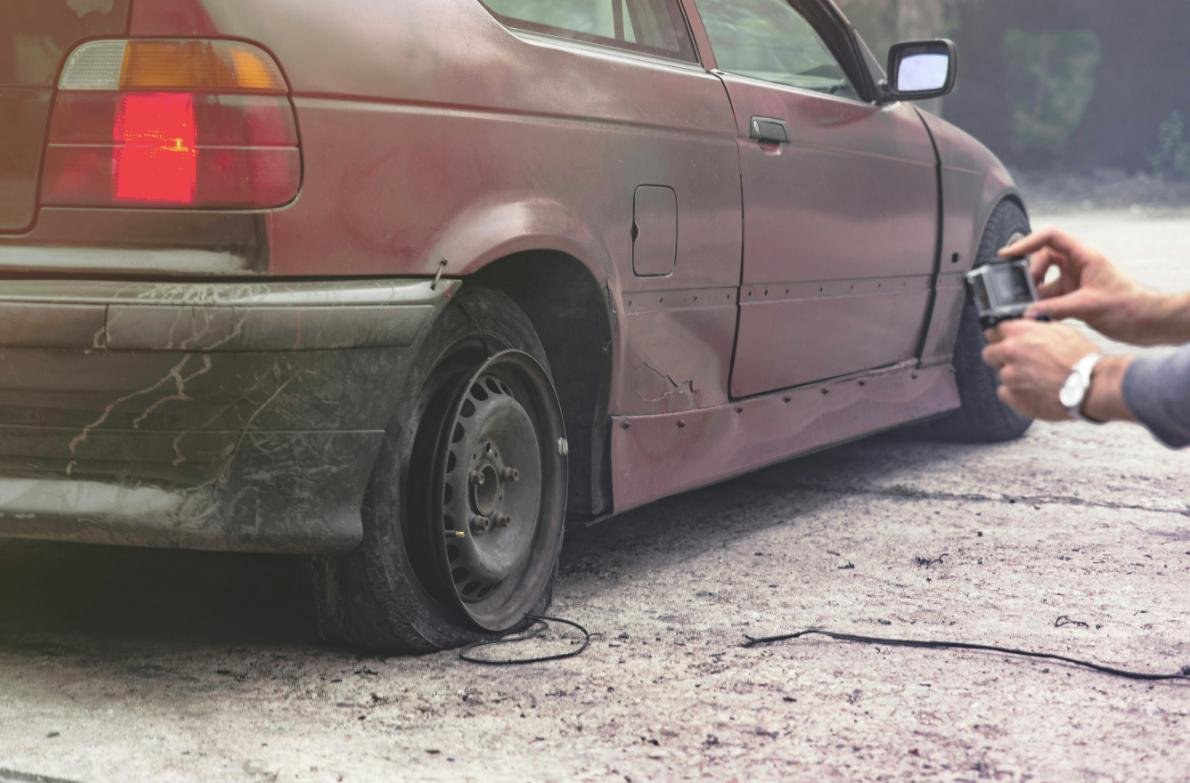Introduction to Car Polishing
Car polishing is a fundamental aspect of vehicle maintenance that involves the application of specialized compounds or abrasives to the car’s exterior surfaces. The primary purpose of polishing is to restore the shine and clarity of the paint, effectively enhancing the overall appearance of the vehicle. Over time, a car’s paint can develop minor scratches, swirl marks, and oxidation due to various factors such as environmental exposure, improper washing techniques, and road debris. By utilizing polishing techniques, these imperfections can be significantly reduced, thereby rejuvenating the car’s look.
In addition to aesthetic improvement, car polishing plays a crucial role in protecting the paintwork from further damage. A well-polished surface not only looks appealing but also serves as a barrier against harmful elements such as UV rays, acid rain, and bird droppings. These environmental factors can lead to deterioration and fading of the paint, thereby not only affecting the vehicle’s visual appeal but also its resale value. Regular polishing creates a smoother, more protective surface that can help avert such damages.
It is important to note that polishing is not the same as waxing; while waxing provides a protective coat, polishing focuses on surface correction. The frequency of polishing depends on various factors including the climate, frequency of washing, and driving conditions. Car enthusiasts may choose to polish their vehicles several times a year, whereas others might do it less frequently. Ultimately, understanding the significance of car polishing in the broader context of vehicle maintenance can aid car owners in making informed decisions regarding their car care routines.
Understanding Different Car Finishes
When it comes to maintaining the appearance of your vehicle, understanding the various types of car finishes is essential. The finish of a car not only influences its aesthetic appeal but also dictates the necessary care practices, including the frequency and method of polishing. The three primary types of finishes are clear coat, single stage, and metallic paint.
The clear coat finish is the most common type used in modern vehicles. This finish consists of a transparent layer applied over a base coat, providing depth and gloss while protecting the underlying paint from UV rays and environmental contaminants. Polishing a clear coat requires careful attention; using the correct polishing compounds and techniques is vital to avoid damaging the surface. Generally, it is recommended to polish a clear coat finish every six months to maintain its shine and protective properties.
Single stage paint finishes are less common but were prevalent in older models. This type of finish combines the color pigment and gloss into a single layer, which can make scratches and blemishes more visible. Due to the nature of the single stage finish, polishing must be approached with caution. Frequent polishing can lead to thinning of the paint layer, hence it is advisable to polish these finishes only once a year or as needed to avoid compromising the finish.
Metallic paints are distinguished by their reflective qualities, which are achieved by mixing pigment with tiny metal flakes. These finishes are often tougher than their non-metallic counterparts, but they still require specific care. Regular polishing may be necessary to preserve the reflective qualities and depth, particularly if environmental factors, such as acid rain or bird droppings, reduce the paint’s luster. A schedule of every three to six months is typically acceptable to maintain a metallic finish.
Factors Influencing Polishing Frequency
When considering how often to polish your car, several key factors must be taken into account, as they can greatly influence the need for car polishing. One of the primary considerations is climate. Cars exposed to harsh weather conditions such as extreme temperatures, heavy rain, or snowfall may require more frequent polishing. For instance, vehicles in areas with strong sunlight are particularly vulnerable to ultraviolet (UV) rays, which can cause paint to fade and oxidize over time. As a result, owners in sunnier regions should consider polishing their cars more regularly to maintain their shine and protective layer.
Another critical factor is exposure to environmental elements. Dust, tree sap, bird droppings, and road debris can all contribute to paint degradation. A car frequently parked under trees or in urban environments may not only need more frequent washes but also polishing, to restore the surface and remove any harmful contaminants. Additionally, the condition of the roads can play a significant role. Driving on unpaved or poorly maintained roads can lead to scrapes, scratches, and an overall decline in paint quality, which may require more polishing to maintain a smooth finish.
The frequency of car washing also directly influences how often polishing is necessary. Regular washing helps to remove dirt and grime that can scratch the surface during polishing. However, if a car is washed infrequently or improperly, it can lead to build-up, making polishing less effective. Therefore, understanding your washing routine is vital. Ultimately, evaluating these factors—climate, environmental exposure, road conditions, and washing habits—will assist car owners in determining the appropriate polishing frequency to keep their vehicles looking new and well-protected.
General Guidelines for Polishing Your Car
Determining how often to polish your car is essential to maintain its appearance and protect its paintwork. While individual requirements may vary, general guidelines suggest that car owners should consider polishing their vehicles approximately every three to six months. This frequency allows for adequate surface protection while preventing significant wear and tear due to environmental factors such as UV rays, road grime, and weather conditions.
For those who drive their vehicles in varying conditions, such as urban environments or locations with harsh climates, more frequent polishing may be necessary. Urban driving often subjects cars to a greater amount of dirt, bird droppings, and tree sap, all of which can damage the paint if not addressed promptly. Conversely, owners who primarily use their cars for leisure drives or in mild climates may find that polishing every six months is sufficient for maintaining a glossy finish.
Additionally, a car owner’s care habits influence the need for polishing. Weekend drivers or those who typically park their vehicles indoors may require less frequent attention compared to daily commuters. Moreover, luxury or classic car owners often place a higher emphasis on the upkeep of their vehicles. This demographic may opt for a specialized polishing regimen and might polish more often than the average car owner, possibly every two to four months, depending on the condition of their car’s paint and the type of polish used.
Ultimately, the manufacturer’s recommendations for your specific vehicle should also be taken into account when determining the polishing schedule. Many car manufacturers provide guidelines that consider the vehicle’s paint type and environmental usage, ensuring the best results for maintaining both aesthetic appeal and resale value. Adhering to these general guidelines will help you keep your car looking its best for years to come.
Signs That Your Car Needs Polishing
Maintaining the exterior of your vehicle is a crucial aspect of car care, and recognizing the signs that your car needs polishing can help ensure its longevity and aesthetic appeal. One of the most immediate indicators that your car requires polishing is a noticeable dullness in the paint. Over time, the clear coat can wear down, leading to a lackluster appearance that diminishes the overall look of your vehicle. This dullness often occurs due to environmental factors such as sun exposure, weather changes, and road contaminants.
Another significant sign is the presence of light scratches and swirl marks on the surface of the paint. These imperfections can be caused by improper washing techniques, debris, or even general wear and tear. If you notice that the paint looks uneven or reflects light poorly, it may be time for a polishing session to restore its clarity and shine.
Oxidation and fading are additional telltale signs that your vehicle’s paint needs attention. Oxidation occurs when the paint reacts with oxygen, usually resulting in a chalky or dull surface. This is particularly common in older vehicles or those frequently exposed to harsh elements. Moreover, paint fading is often a consequence of prolonged sun exposure, which can lead to a loss of color vibrancy.
Assessing your vehicle’s condition effectively involves examining the surface under different lighting conditions. Look for areas that appear uneven in shine or have visible blemishes. Taking the time to evaluate your vehicle’s exterior can help you determine how often to polish your car. By addressing these signs promptly, you can maintain the appearance and value of your vehicle while ensuring it remains a source of pride and enjoyment.
Choosing the Right Products for Polishing
When it comes to car maintenance, selecting the appropriate polishing products is essential for achieving the desired results while preserving the vehicle’s finish. Numerous products are available in the market, each designed for specific types of finishes and individual requirements. Understanding these options will help car owners make informed decisions when polishing their vehicles.
One of the primary categories of polishing products includes various types of polishes, such as abrasive and non-abrasive. Abrasive polishes are effective for removing imperfections, such as swirl marks and oxidation, making them ideal for neglected finishes. However, care should be taken not to use them too frequently, as they can wear down clear coats over time. Non-abrasive polishes, on the other hand, are gentler and can enhance shine without the risk of damaging the surface, making them suitable for regular maintenance.
Another essential distinction is between wax and sealant products. Carnauba wax is a natural product that provides a warm, deep shine and decent protection against environmental contaminants. Synthetic sealants, conversely, offer longer-lasting protection and durability, making them ideal for those who prefer a maintenance-free option. It’s important to evaluate the specific needs of the car’s finish and the desired visual outcome when choosing between these options.
Finally, selecting the right applicators is equally crucial for effective polishing. Foam applicators are a popular choice for beginners, as they are easy to manipulate and distribute products evenly. Microfiber pads, on the other hand, provide a higher level of finish and are often preferred by professionals. Ultimately, the choice of products should align with the individual’s experience level and the condition of the car’s surface to ensure optimal results.
DIY vs. Professional Polishing
When it comes to car polishing, individuals often face the decision between a do-it-yourself (DIY) approach and hiring a professional service. Each option carries its own advantages and disadvantages that can significantly impact both the process and the final result.
Opting for the DIY method can provide several benefits. Firstly, it offers cost savings, as purchasing polishing products and tools is typically less expensive than professional services. For car enthusiasts or individuals comfortable with automotive care, DIY polishing can be a rewarding experience, fostering a sense of accomplishment. Moreover, it allows for complete control over the entire polishing process, enabling users to spend as much time and effort as they deem necessary to achieve their desired results.
However, DIY polishing is not without its challenges. It requires a certain level of skill and knowledge to avoid common pitfalls, such as over-polishing, which can damage the paint. Additionally, not everyone has access to professional-grade tools or high-quality polishing compounds, which may compromise the outcome compared to a professional job. Another factor to consider is time; polishing a car can be labor-intensive, requiring several hours to ensure quality results.
On the other hand, hiring a professional polishing service can take the burden off the vehicle owner. Professionals typically possess both the expertise and high-quality tools necessary for thorough and effective polishing. They are trained to recognize and address various paint conditions, ensuring the best possible care for the vehicle. The results can also be more consistent and visually appealing, as experienced technicians bring their skills to the table.
Nevertheless, professional services can incur a significant cost, which may not be feasible for everyone. Ultimately, the decision between DIY and professional polishing requires careful consideration of one’s skills, resources, and expectations regarding the quality and longevity of the results.
Tips for Effective Car Polishing
Polishing your car can significantly enhance its appearance and protect the paintwork. To achieve the best results, it’s crucial to employ effective techniques, utilize the appropriate tools, and consider environmental factors. First and foremost, ensure that the car is clean before you commence the polishing process. A thorough wash will remove dirt, grime, and contaminants that could scratch the paint while polishing. Use two buckets—one for soapy water and one for rinsing your sponge or mitt. This method helps to prevent scratching and ensures a clean surface to work on.
Timing is essential when it comes to car polishing. Choose a day that is not too hot or sunny, as direct sunlight can cause the polish to dry too quickly, leading to uneven results. Overcast days or shaded areas are ideal. Moreover, consider the temperature of the surfaces you are working on; as a general rule, the ideal temperature should be between 50°F and 80°F (10°C to 27°C).
Utilizing the right tools can make a significant difference in the outcome of your polishing efforts. Invest in high-quality polishing pads suited for your type of polish—foam pads tend to work well for most situations, while wool pads are better for more severe paint defects. Additionally, a dual-action polisher can provide uniform results while reducing the risk of damage to the paint. Be sure to follow the specific product instructions when applying polish.
Lastly, always work in small sections, applying the polish in a circular motion to achieve thorough coverage. Allow the polish to haze before wiping it off with a microfiber cloth. This not only enhances the shine but also helps protect the paint. Employing these practical tips will assist in optimizing the effectiveness of your car polishing routine, ensuring a lasting and brilliant finish.
Conclusion: Maintaining Your Car’s Shine
In this comprehensive guide, we have explored the significance of regular car polishing and how it contributes to both the aesthetic appeal and resale value of your vehicle. Car polishing is an integral part of car maintenance, as it not only enhances the appearance by removing imperfections but also protects the paintwork from environmental hazards and UV damage.
One of the primary takeaways from our discussion is the recommended frequency of polishing your car. Depending on various factors such as the type of paint, climate conditions, and general usage, polishing should typically be done every three to six months. Vehicles exposed to harsher conditions may require more frequent polishing to maintain their shine and protect their surfaces effectively. Additionally, routine washing and waxing can greatly complement the polishing process, providing a layered defense against dirt and contaminants.
Moreover, understanding the difference between polishing and waxing is crucial for effective car care. Polishing is aimed at restoring the finish, while waxing forms a protective barrier. By utilizing both techniques appropriately, car owners can ensure that their vehicle remains in optimal condition over time.
Ultimately, investing time in the polishing process will not only keep your car looking its best but also serve as a wise investment for its long-term value. Regular car polishing is more than just a cosmetic enhancement; it is a vital part of vehicle maintenance that directly influences both durability and presentation. As a proud car owner, taking proactive measures in maintaining your vehicle’s shine will pay off, resulting in a car that stands out on the road and retains its value in the resale market.








